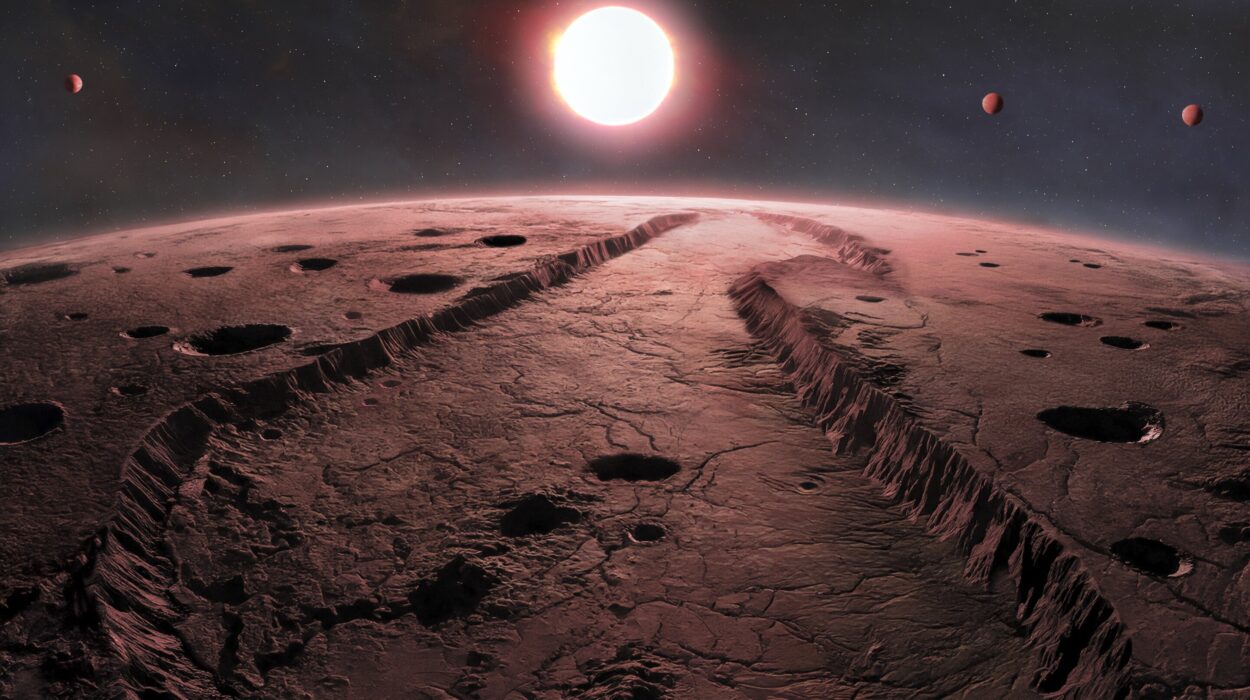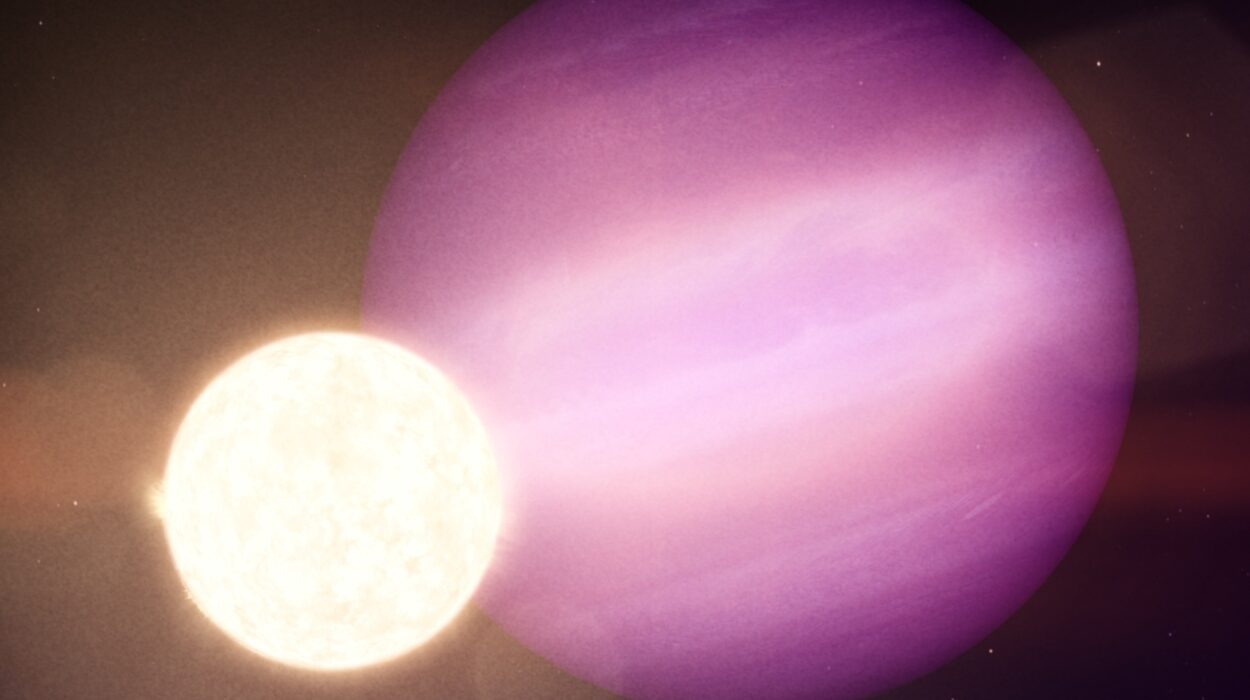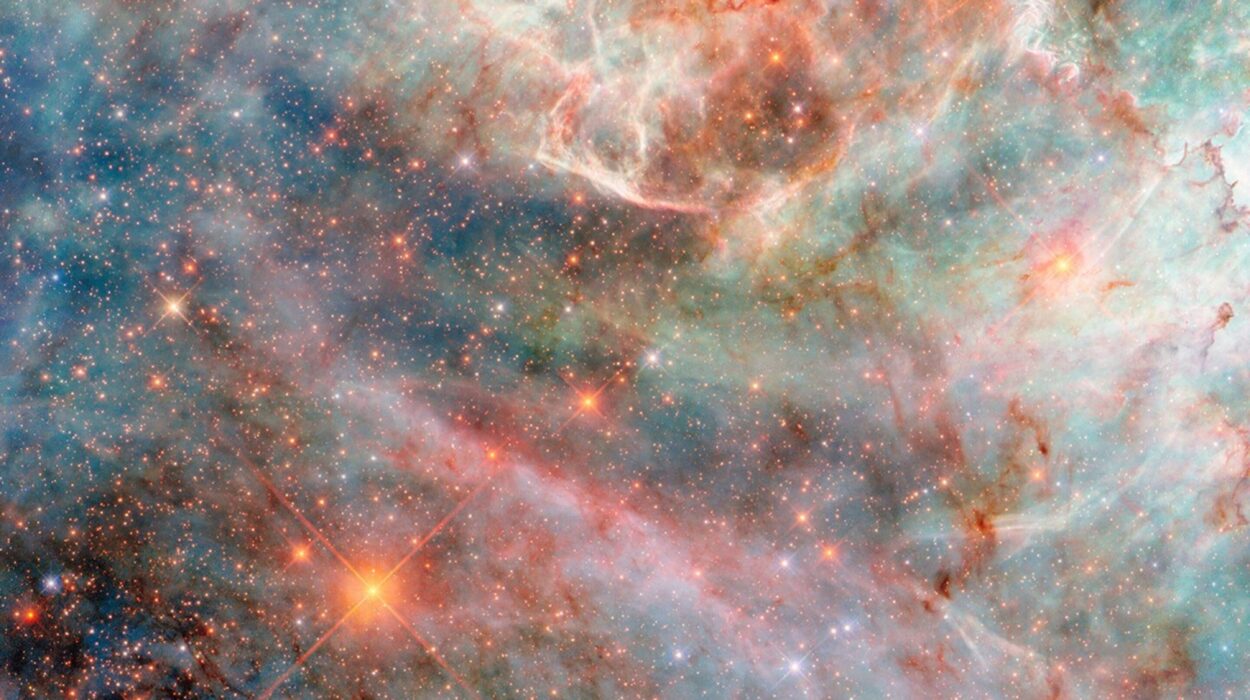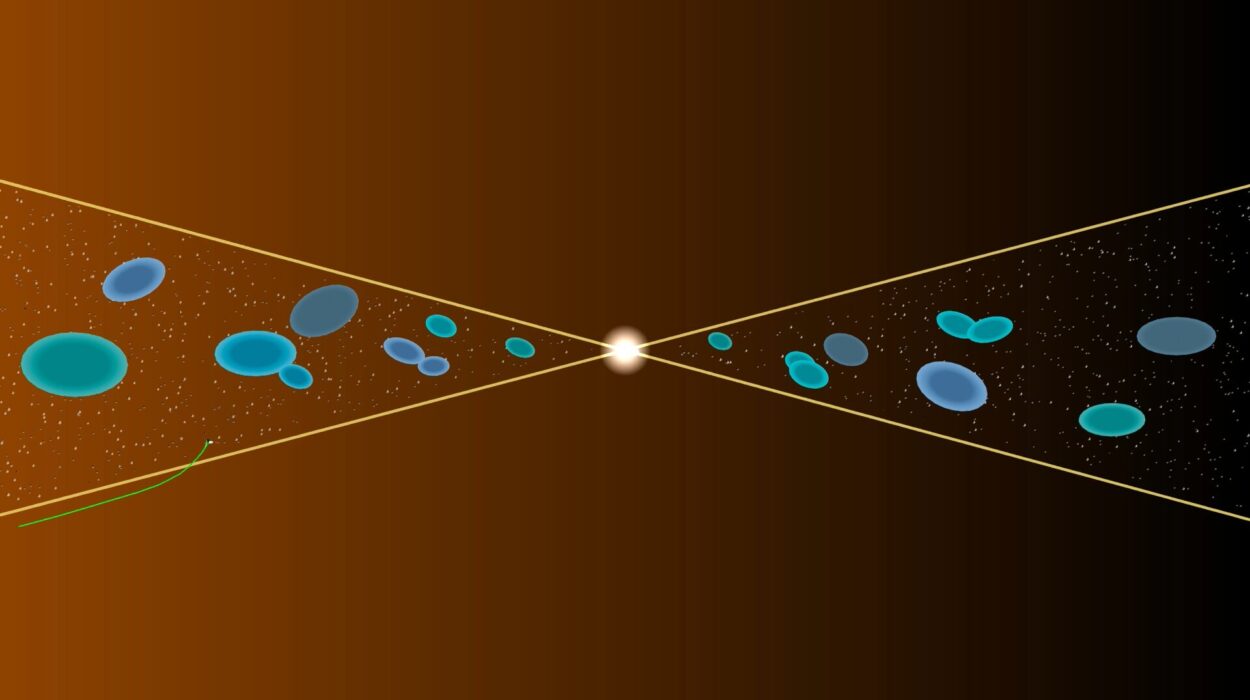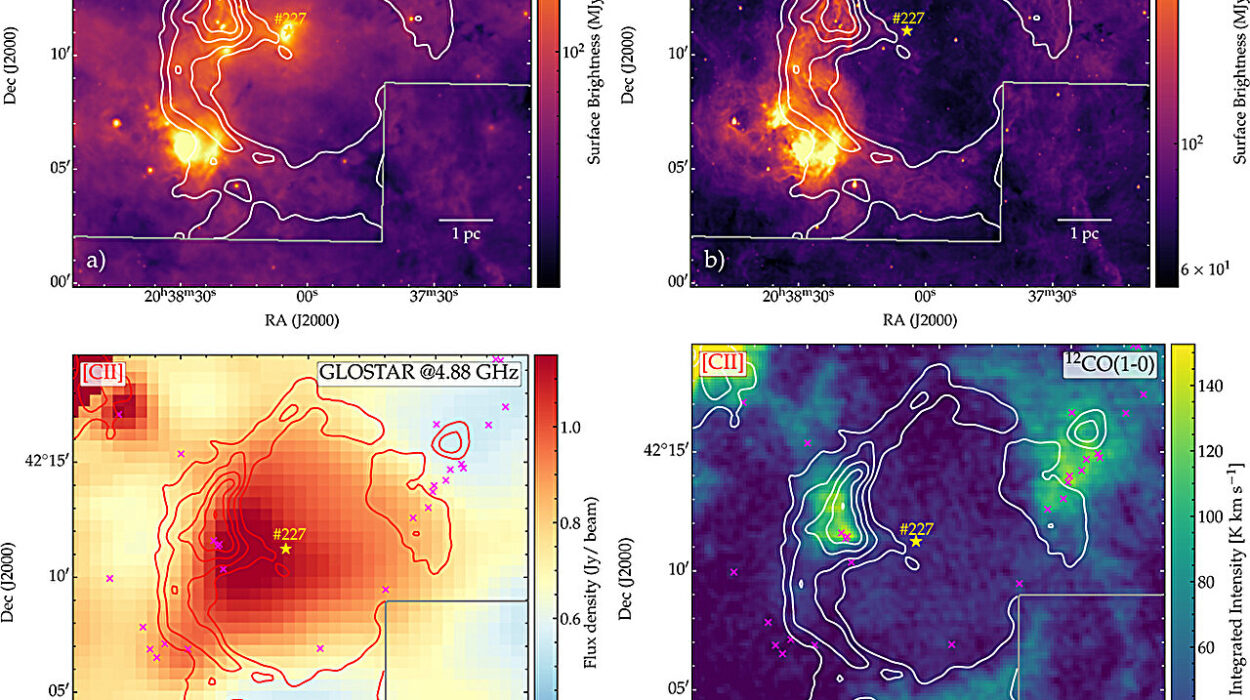Long before galaxies were born and stars lit the skies, before atoms formed or even space and time themselves had fully taken shape, our universe existed in a state so alien, so incomprehensibly different, that it defies easy explanation. To make sense of that earliest moment, scientists have turned to one of the most powerful—and strangest—theories in modern cosmology: cosmic inflation.
Cosmic inflation is not just a theory about what happened at the beginning of the universe. It is a radical proposal that attempts to explain how everything we see—the galaxies, the stars, the planets, the cosmic microwave background—emerged from a single, infinitesimally small region of space. It is a story of an exponential explosion, not of matter, but of space itself. A story in which the universe, in a tiny fraction of a second, ballooned in size faster than the speed of light.
It sounds almost like science fiction. Yet cosmic inflation is one of the most compelling ideas in theoretical physics, supported by deep mathematical reasoning and powerful observational evidence. To understand what cosmic inflation is, and why it matters, we need to go on a journey—not just through space, but back in time, to the first moments after the birth of everything.
The Big Bang’s Incomplete Story
To appreciate inflation, we must start with what it aimed to fix. For decades, the Big Bang theory has been the prevailing explanation for the origin and evolution of the universe. According to this theory, the universe began roughly 13.8 billion years ago in an extremely hot, dense state, and has been expanding and cooling ever since.
The Big Bang explains many things remarkably well: the abundance of light elements like hydrogen and helium, the expansion of the cosmos, and most famously, the cosmic microwave background (CMB)—the faint glow of radiation that fills the sky, a relic of the early universe.
But the Big Bang model had problems—deep, puzzling problems that it couldn’t solve on its own.
Why, for instance, is the cosmic microwave background so uniform? No matter which direction we look, the temperature of this radiation is almost exactly the same. Yet the regions of space we observe are so far apart that, according to the speed of light, they could never have been in contact with each other to “even out” their temperatures. This is known as the horizon problem.
Another issue is the flatness problem. The geometry of the universe appears to be extremely flat—meaning that, on cosmic scales, space is not curved inward or outward, but is balanced on a razor’s edge. But for this to be true, the initial conditions of the universe would have had to be finely tuned to an almost absurd degree. Why would the universe start off in such a perfect state?
And finally, the Big Bang doesn’t explain where the initial fluctuations came from—the tiny ripples in density that would later grow into galaxies and clusters of galaxies. If the universe began in a chaotic explosion, why does it seem to have such smooth, organized structure?
These were the mysteries that led physicists to search for a deeper explanation. And in the late 1970s and early 1980s, a new idea began to emerge—an idea that would come to be known as inflation.
The Birth of Inflation: Alan Guth’s Brilliant Insight
The concept of cosmic inflation was born from a curious observation about the early universe, specifically in the context of grand unified theories (GUTs). These are theoretical frameworks that attempt to merge the strong, weak, and electromagnetic forces into a single, unified force. According to some versions of GUTs, as the universe cooled in the moments after the Big Bang, it may have undergone phase transitions, similar to how water freezes into ice.
During one of these early transitions, the universe could have been trapped in a kind of false vacuum—a high-energy state that was not the lowest possible energy configuration. This vacuum would have had unusual properties: it would act like a form of repulsive gravity, causing space itself to expand exponentially.
In 1980, a young physicist named Alan Guth realized the implications of this scenario. He proposed that in the first tiny fraction of a second—around 10^-36 to 10^-32 seconds after the Big Bang—the universe underwent a phase of exponential expansion. In that blink of time, the universe grew by a factor of at least 10^26, expanding from subatomic scales to macroscopic ones, far larger than the observable universe today.
This sudden inflationary expansion would solve the Big Bang’s most troubling puzzles in one stroke. It would stretch space so vastly and uniformly that any irregularities would be smoothed out, explaining the universe’s flatness. It would allow regions that are now far apart to have once been close enough to interact and equalize, solving the horizon problem. And quantum fluctuations in the inflation field—tiny, random variations—would be stretched to cosmic scales, seeding the galaxies we see today.
Alan Guth’s paper, titled “Inflationary universe: A possible solution to the horizon and flatness problems,” launched a revolution in cosmology. But it was only the beginning. Over the next decade, physicists refined and expanded the theory, resolving initial inconsistencies and proposing more realistic models of inflation.
How Inflation Works
To understand cosmic inflation, we need to dive into the behavior of fields in quantum physics. In inflationary models, the key player is a hypothetical field known as the inflaton field. This field permeates all of space, and its potential energy drives the exponential expansion of the universe.
Imagine a ball rolling down a hill. If the hill is flat and wide near the top, the ball rolls slowly. During this slow-roll phase, the inflaton field’s potential energy remains nearly constant, and that energy acts like a cosmological fuel, causing space to stretch exponentially.
This exponential expansion is not like an explosion of matter into space. It is space itself growing—doubling in size again and again. In each tiny fraction of a second, space doubles in scale. During this phase, any previous curvature or irregularities in space are smoothed out, much like how a balloon becomes smoother as it inflates.
Eventually, the field reaches the steeper part of the potential and the ball rolls faster. The inflationary phase ends, and the inflaton field decays, releasing its stored energy into particles and radiation. This process is known as reheating, and it effectively kickstarts the hot, dense conditions of the traditional Big Bang model.
In this way, cosmic inflation doesn’t replace the Big Bang—it sets the stage for it. Inflation provides the initial conditions: a flat, uniform, expanding universe filled with energy. From there, standard Big Bang physics takes over.
Stretching Quantum Fluctuations into Galaxies
One of inflation’s most remarkable consequences is that it provides a mechanism for the origin of cosmic structure—galaxies, stars, clusters, and voids.
According to quantum theory, even empty space is never truly empty. It seethes with temporary particles and energy fluctuations due to the uncertainty principle. During inflation, these microscopic fluctuations in the inflaton field were stretched by the expanding space into macroscopic scales.
What began as tiny quantum wiggles became vast density fluctuations—regions of space slightly more or less dense than others. These variations would later become the seeds of structure in the universe. Gravity would amplify them, pulling matter into clumps that eventually formed galaxies and clusters.
This prediction is not just theoretical. The pattern of these fluctuations is imprinted on the cosmic microwave background, the radiation left over from the early universe. Observations of the CMB, particularly from satellites like COBE, WMAP, and Planck, have confirmed the exact statistical properties predicted by inflationary theory—tiny temperature fluctuations with a near scale-invariant spectrum, just as inflation models forecasted.
In a sense, inflation allows us to trace the origin of all structure in the universe—from the Milky Way to your own body—to random quantum fluctuations magnified by the stretching of space.
Testing the Theory: The Cosmic Microwave Background
No theory is complete without empirical validation, and inflation has been remarkably successful on that front. The primary evidence comes from the CMB—the afterglow of the Big Bang, which provides a snapshot of the universe when it was just 380,000 years old.
The CMB is not perfectly uniform. It contains tiny temperature fluctuations on the order of one part in 100,000. These fluctuations correspond to regions of slightly different densities, the direct ancestors of cosmic structure.
Inflation makes specific predictions about these fluctuations. It predicts that they should be nearly scale-invariant, meaning that structures should appear similar at different scales. It also predicts that the fluctuations should be gaussian and randomly distributed.
Moreover, inflation predicts the presence of a special kind of signal: primordial gravitational waves, ripples in space-time generated during inflation. These waves would leave a distinct signature in the polarization of the CMB—a swirling pattern known as B-mode polarization.
Detecting this signal would be a major breakthrough. In 2014, the BICEP2 experiment announced it had seen such a pattern, but the result was later attributed to galactic dust. Still, efforts continue, with new observatories like LiteBIRD and CMB-S4 aiming to detect or rule out these elusive signatures.
While we haven’t yet confirmed every detail, the evidence so far aligns strikingly well with inflation’s predictions. The temperature fluctuations, the flatness of the universe, and the distribution of cosmic structures all point to an inflationary beginning.
Variations and Eternal Inflation
Cosmic inflation is not a single theory, but a family of models. Physicists have proposed many versions, from chaotic inflation to new inflation, natural inflation, and hybrid inflation, each differing in the shape of the potential and the behavior of the inflaton field.
One of the most fascinating offshoots is eternal inflation. In some models, the process of inflation never completely ends. While inflation stops in some regions of space (like our observable universe), it continues in others, creating a kind of fractal cosmos where bubble universes form within an inflating multiverse.
This idea leads to the concept of a multiverse—a vast ensemble of universes, each potentially with different physical laws, constants, and histories. In this view, our universe is just one bubble among many, a cosmic island in an ever-growing sea.
Eternal inflation raises profound philosophical and scientific questions. If other universes exist, can we ever detect them? How do we define probability in a multiverse? Does inflation truly explain the origin of everything, or merely describe one branch of a deeper, unknown reality?
These questions lie at the frontier of cosmology and theoretical physics. They hint at the staggering vastness and mystery of the cosmos—and the limits of what we may ever know.
Challenges and Alternatives
While inflation is a powerful and widely accepted theory, it is not without its critics. Some physicists argue that inflation may be too flexible—it can accommodate a wide range of outcomes and thus risks being unfalsifiable.
Others raise questions about the initial conditions needed for inflation to begin. If inflation is meant to explain the fine-tuning of the Big Bang, does it require its own fine-tuning to get started? What triggered the inflaton field? What is its nature?
In response to these concerns, alternative models have been proposed, such as bouncing cosmologies, ekpyrotic models, or string gas cosmology. These ideas aim to explain the early universe without invoking a rapid inflationary phase.
However, none of these alternatives has matched the predictive success of inflation or the degree of observational confirmation it has received. For now, inflation remains the leading theory of the universe’s birth.
The Cosmic Symphony
Cosmic inflation is a theory that stretches the imagination as much as it stretches space. It proposes that our entire observable universe—billions of light-years across—originated from a tiny speck, expanded faster than light, and smoothed itself into a cosmos of remarkable uniformity and beauty.
It solves profound mysteries, explains the origin of structure, and makes predictions that align with our best observations. It connects quantum mechanics with cosmology, the smallest scales with the largest, in a grand, sweeping narrative.
Yet it also opens the door to questions we may never fully answer. What caused inflation? Is there a multiverse? What lies beyond our cosmic horizon?
In contemplating inflation, we confront the deepest puzzles of existence: Why is there something rather than nothing? Why is the universe the way it is? And how far can our minds—and our theories—take us into the beginning of time?

